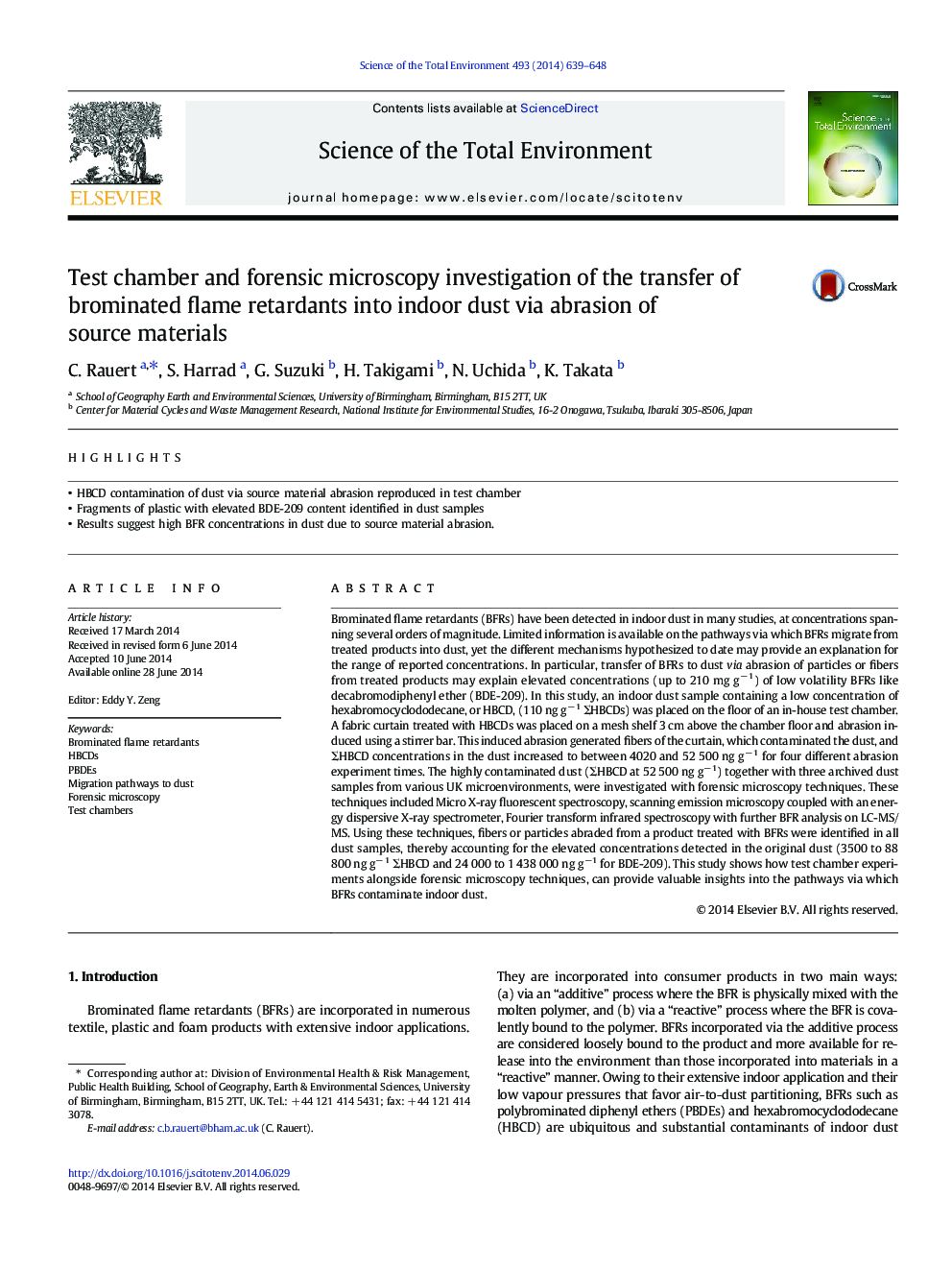| کد مقاله | کد نشریه | سال انتشار | مقاله انگلیسی | نسخه تمام متن |
|---|---|---|---|---|
| 6329781 | 1619778 | 2014 | 10 صفحه PDF | دانلود رایگان |
عنوان انگلیسی مقاله ISI
Test chamber and forensic microscopy investigation of the transfer of brominated flame retardants into indoor dust via abrasion of source materials
ترجمه فارسی عنوان
بررسی محفظه آزمایشگاهی و میکروسکوپ قانونی انتقال آلیاژهای بروموخته شعله به گرد و غبار داخلی از طریق سایش مواد اولیه
دانلود مقاله + سفارش ترجمه
دانلود مقاله ISI انگلیسی
رایگان برای ایرانیان
کلمات کلیدی
موضوعات مرتبط
علوم زیستی و بیوفناوری
علوم محیط زیست
شیمی زیست محیطی
چکیده انگلیسی
Brominated flame retardants (BFRs) have been detected in indoor dust in many studies, at concentrations spanning several orders of magnitude. Limited information is available on the pathways via which BFRs migrate from treated products into dust, yet the different mechanisms hypothesized to date may provide an explanation for the range of reported concentrations. In particular, transfer of BFRs to dust via abrasion of particles or fibers from treated products may explain elevated concentrations (up to 210 mg gâ 1) of low volatility BFRs like decabromodiphenyl ether (BDE-209). In this study, an indoor dust sample containing a low concentration of hexabromocyclododecane, or HBCD, (110 ng gâ 1 ΣHBCDs) was placed on the floor of an in-house test chamber. A fabric curtain treated with HBCDs was placed on a mesh shelf 3 cm above the chamber floor and abrasion induced using a stirrer bar. This induced abrasion generated fibers of the curtain, which contaminated the dust, and ΣHBCD concentrations in the dust increased to between 4020 and 52 500 ng gâ 1 for four different abrasion experiment times. The highly contaminated dust (ΣHBCD at 52 500 ng gâ 1) together with three archived dust samples from various UK microenvironments, were investigated with forensic microscopy techniques. These techniques included Micro X-ray fluorescent spectroscopy, scanning emission microscopy coupled with an energy dispersive X-ray spectrometer, Fourier transform infrared spectroscopy with further BFR analysis on LC-MS/MS. Using these techniques, fibers or particles abraded from a product treated with BFRs were identified in all dust samples, thereby accounting for the elevated concentrations detected in the original dust (3500 to 88 800 ng gâ 1 ΣHBCD and 24 000 to 1â
438 000 ng gâ1 for BDE-209). This study shows how test chamber experiments alongside forensic microscopy techniques, can provide valuable insights into the pathways via which BFRs contaminate indoor dust.
ناشر
Database: Elsevier - ScienceDirect (ساینس دایرکت)
Journal: Science of The Total Environment - Volume 493, 15 September 2014, Pages 639-648
Journal: Science of The Total Environment - Volume 493, 15 September 2014, Pages 639-648
نویسندگان
C. Rauert, S. Harrad, G. Suzuki, H. Takigami, N. Uchida, K. Takata,
